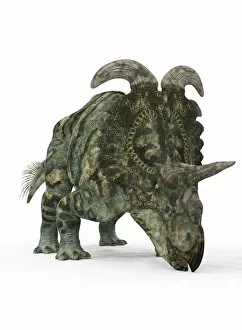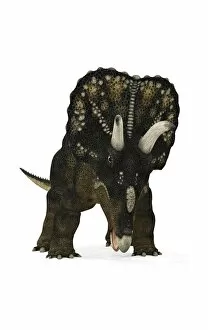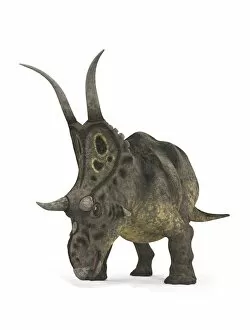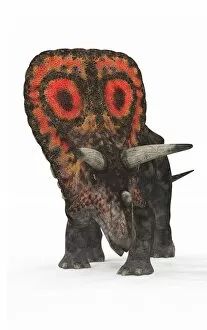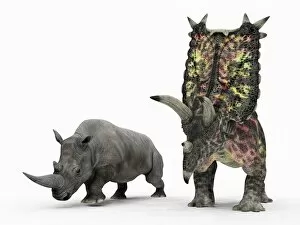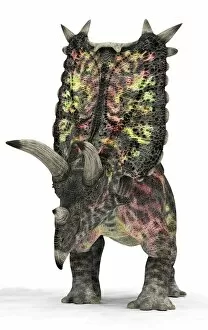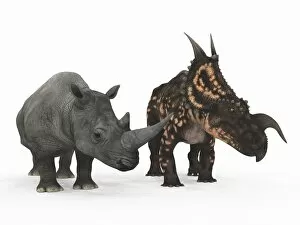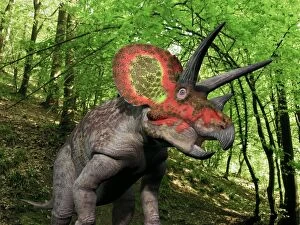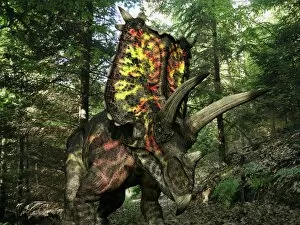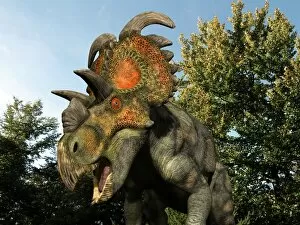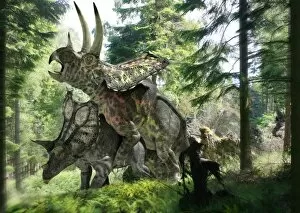Ceratopsids Collection
Ceratopsids, also known as cerapod dinosaurs, bear a striking resemblance to their modern-day counterpart - the rhino
For sale as Licensed Images
Choose your image, Select your licence and Download the media
Ceratopsids, also known as cerapod dinosaurs, bear a striking resemblance to their modern-day counterpart - the rhino. These magnificent creatures roamed the Earth millions of years ago and left behind an incredible fossil record for us to explore. One notable member of this dinosaur family is Albertaceratops. With its distinctive frill and long horns, it's hard not to draw comparisons between this ancient giant and its rhinoceros cousin. Similarly, Zuniceratops showcases unique features that make it stand out among other ceratopsids. Of course, when discussing ceratopsids, one cannot overlook the iconic Triceratops. This legendary dinosaur with its three large horns has become synonymous with the prehistoric era. Its powerful build and formidable appearance are reminiscent of both a rhino's strength and grace. But Triceratops isn't alone in this fascinating group. Nedoceratops, Diabloceratops, Torosaurus – each species brings something new to the table while still maintaining that distinct cerapod charm. Interestingly enough, there are even instances where similarities between rhinos and certain ceratopisds extend beyond mere appearances. Take Pentaceratops for example; its name literally translates to "five-horned face, " much like some variations seen in rhinoceroses today. And let's not forget about Einiosaurus. This intriguing creature shares traits with both a rhino and a cerapod dinosaur – truly showcasing nature's ability to create remarkable adaptations throughout time. As we continue our exploration into these captivating creatures from eons past, we uncover more connections between them and their modern-day counterparts. Cerapsoids may have vanished from our world long ago but studying their fossils allows us glimpses into an extraordinary chapter in Earth's history – one where dinosaurs ruled supreme alongside animals we still encounter today like the mighty rhinoceros.



